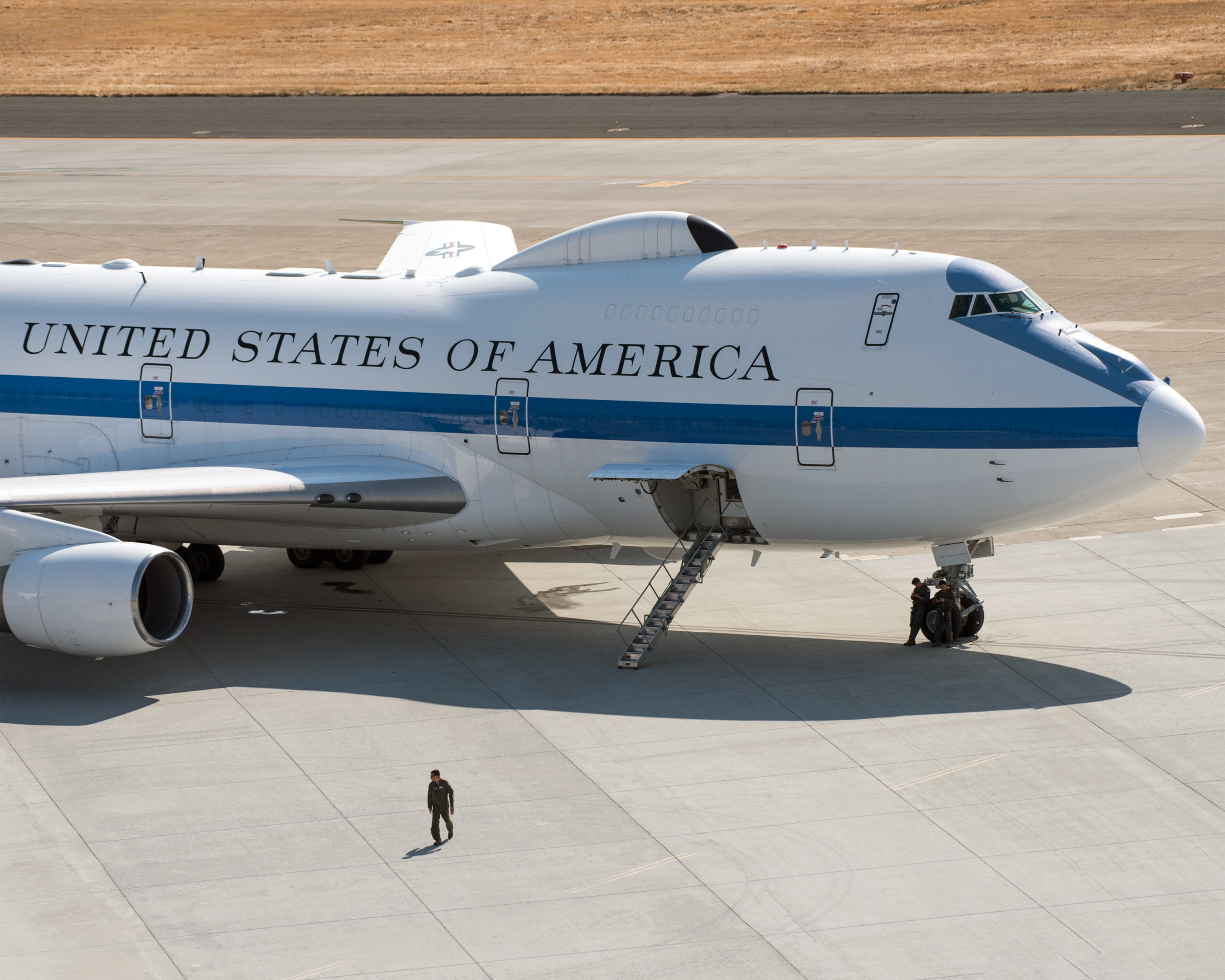The plan to create the successor to the US Air Force’s Nightwatch aircraft – the so-called “Doomsday plane” that acts as an airborne strategic command and control post in the event of nuclear war – is gaining traction.
In April, Sierra Nevada Corporation won a $13 billion contract with the Pentagon to build the Air Force’s new Survivable Airborne Operations Center (SAOC) fleet.
In the latest move, Reuters reports that the aerospace company has now bought five Boeing 747-8s planes from Korean Air, South Korea’s largest airline. Valued at 918 billion Korean won ($674 million), the planes are expected to be delivered to the US by September 2025.
The upcoming SAOC is being developed to replace the aging fleet of Boeing E-4B Nightwatch aircraft, planes that serve as a flying war room for the president, secretary of defense, and other key government and military officials during times of crisis, such as a nuclear war.
The US Air Force currently operates four E-4B aircraft with at least one on alert at all times – 24 hours a day, 7 days a week – to “provide direct support to the President, the Secretary of Defense, and the [Joint Chiefs of Staff].”
The planes are occasionally spotted in different parts of the world by flight trackers, often for reasons unclear to mere civilians.

An E-4B aircraft sits on the tarmac at California’s Travis Air Force Base on September 11, 2017.
Image credit: Louis Briscese/US Air Force (Public Domain)
The elusive E-4B is a militarized version of the Boeing 747-200, a super-size jet designed for international cargo transportation, and can seat up to 111 crew. Its main deck has been fitted out with six modified areas: a command work area, a conference room, a briefing room, an operations team work area, a communications area, and a rest area.
“The E-4B is protected against the effects of electromagnetic pulse and has an electrical system designed to support advanced electronics and a wide variety of communications equipment,” the US Air Force writes on their website.
“An advanced satellite communications system provides worldwide communication for senior leaders through the airborne operations center. Other improvements include nuclear and thermal effects shielding, acoustic control, an improved technical control facility and an upgraded air-conditioning system for cooling electrical components.”
The E-4B has been in operation since the 1970s, when the Cold War was far from over. With the aircraft nearing the end of their shelf life, the US Air Force is developing new planes to tackle the fresh wave of geopolitical turmoil facing the world.
Details on the new SAOC’s development are understandably scant, so it’s not yet clear how it will differ from the current E-4B Nightwatch aircraft. However, the US Air Force has indicated it will involve much more digital design than previous models.
It’s also unclear when the new system will hit the skies, although most sources suggest it won’t be ready until the 2030s.
Source Link: The US Has Ordered Five New Jets For Their New "Doomsday Plane" Fleet